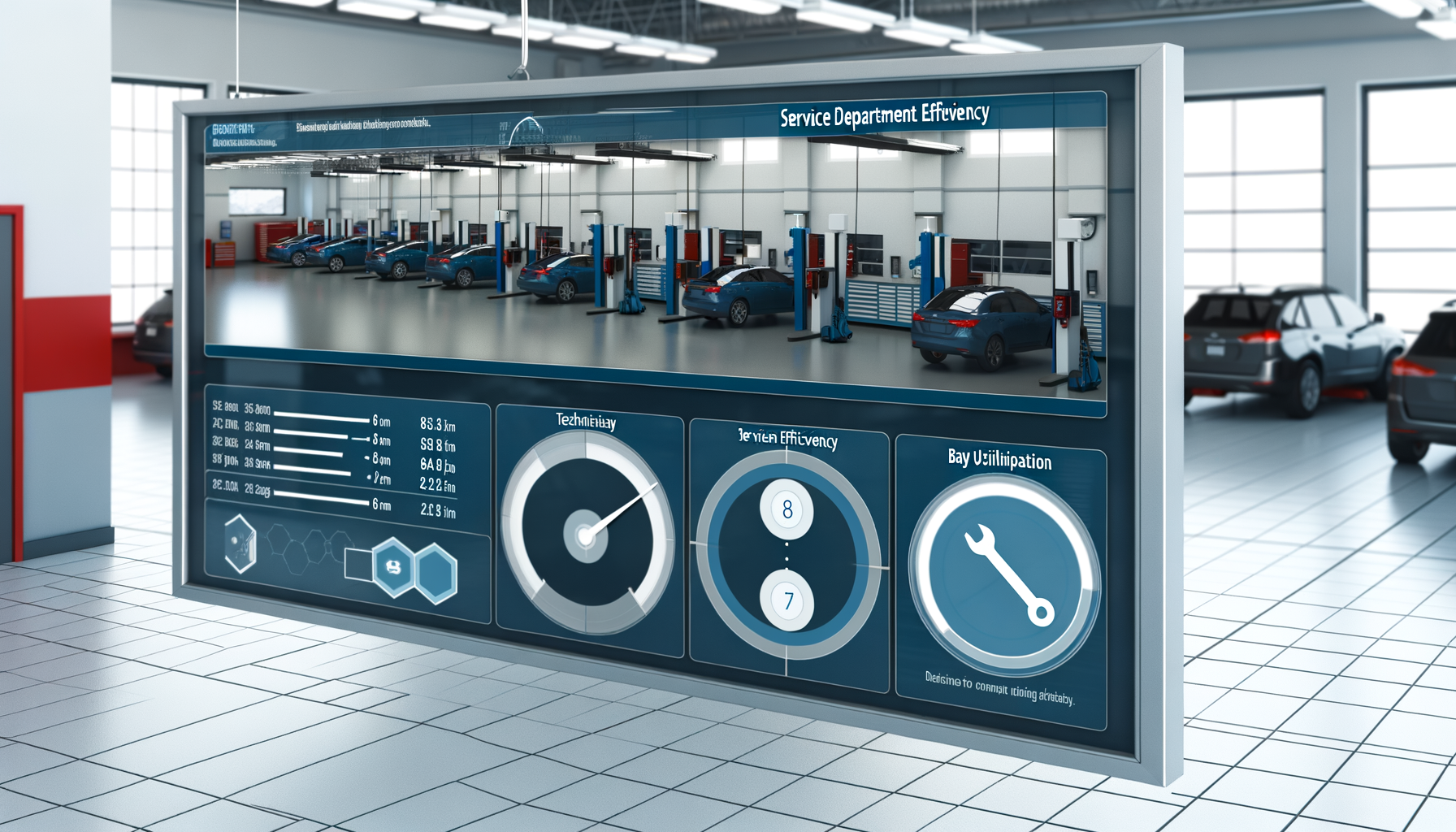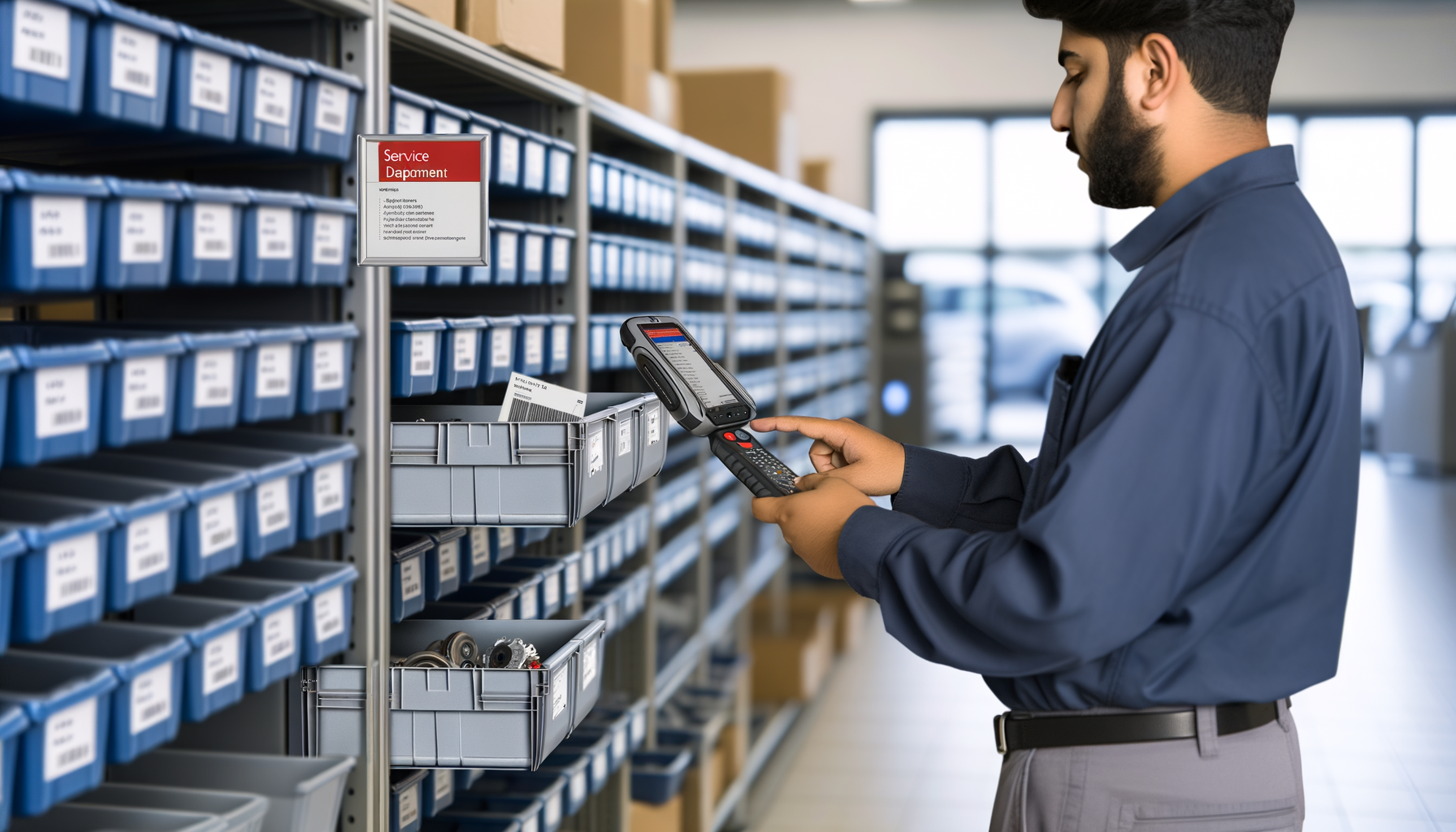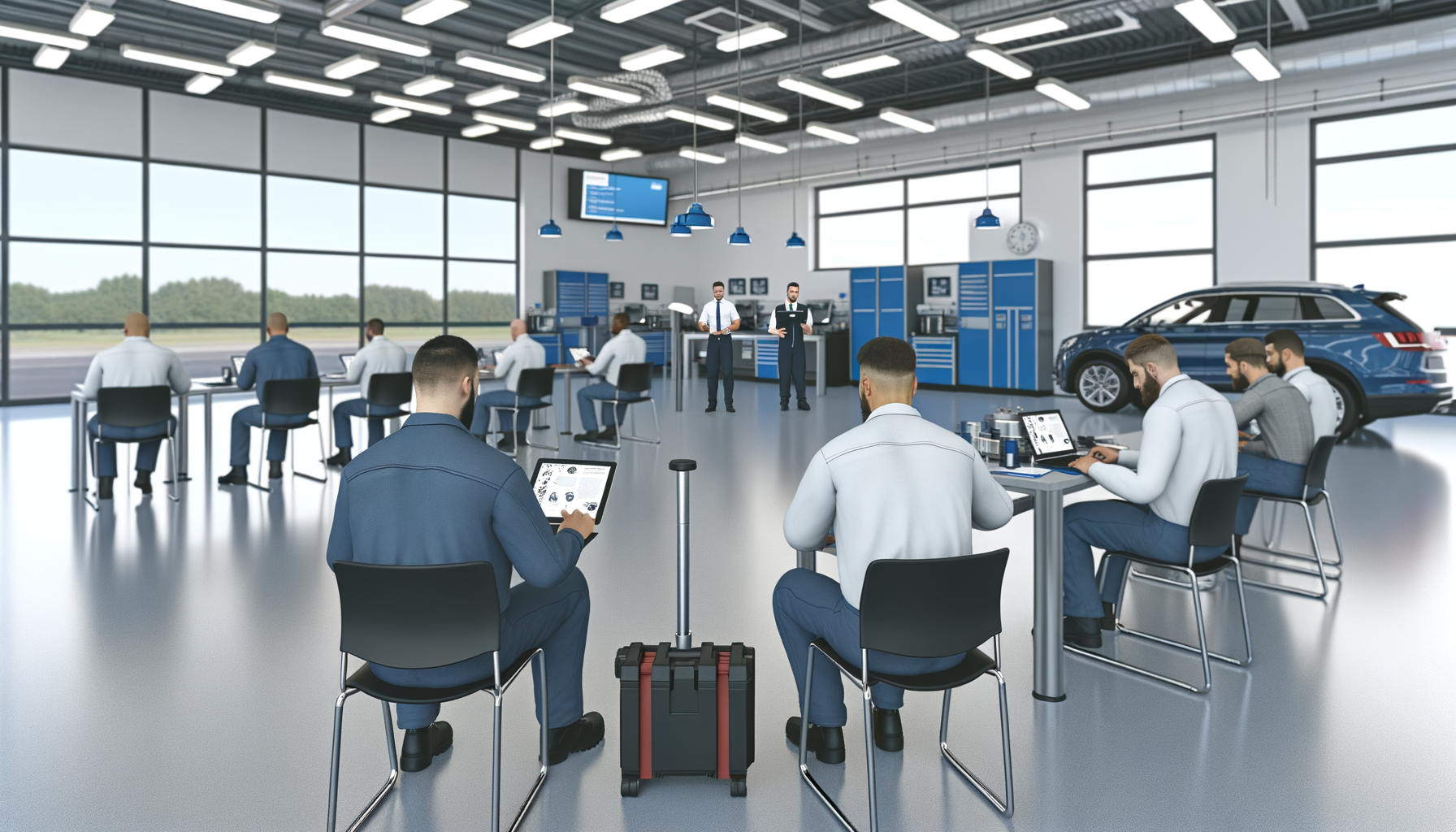Grease and Algorithms: Crafting Tomorrow's Service Department Symphony

Understanding the Efficiency Equation: Metrics and Benchmarks

Efficiency in a service department is not just about speed but about optimizing every aspect of operations. Key metrics include technician labor hours, service bay utilization rates, and first-time fix percentages.
According to recent studies, top-performing dealerships achieve a 90% first-time fix rate and 85% service bay utilization. These benchmarks are crucial for identifying areas needing improvement.
Implementing a dashboard that consolidates real-time metrics provides clarity and actionable insights. Steps include selecting the right KPIs, integrating data sources, and setting regular review periods.
Streamlining Workflow with Advanced Automation

Automation is revolutionizing service departments by minimizing manual tasks and reducing human error. Robotic Process Automation (RPA) can handle routine scheduling and parts inventory management.
In a case study, a dealership using automated scheduling saw a 20% improvement in service bay utilization and a 25% reduction in customer wait times.
To implement automation, start by identifying repetitive tasks, evaluating suitable software solutions, and training staff on new systems.
Enhancing Technician Productivity and Reducing Downtime

Technician productivity is paramount to service efficiency. Common barriers include unclear job assignments and inadequate tools.
Adopting digital work order systems ensures technicians have clear, real-time updates on assignments, reducing idle time.
Steps to enhance productivity include investing in robust training programs, providing quality tools, and utilizing mobile workstations.
Optimizing Parts Management Amidst Supply Chain Challenges

Parts shortages continue to challenge service departments, impacting efficiency and customer satisfaction. Effective inventory management is crucial.
Dealerships are turning to predictive analytics to forecast demand and optimize stock levels, reducing wait times for parts.
Steps include implementing a reliable inventory management system, establishing strong supplier relationships, and utilizing just-in-time ordering where feasible.
Leveraging Data Analytics for Continuous Improvement

Data analytics offers a window into service department operations, highlighting inefficiencies and opportunities for growth.
By analyzing service data, a dealership was able to increase customer throughput by 30% while maintaining high satisfaction ratings.
To leverage analytics, collect comprehensive data points, utilize specialized software, and conduct regular review meetings to act on insights.
Improving Customer Experience and Reducing Wait Times

Customer satisfaction is closely tied to wait times and service quality. With 68% preferring digital scheduling, meeting these expectations is key.
Implementing online booking systems and automated updates has resulted in a 35% increase in customer satisfaction scores.
To improve experience, integrate a user-friendly digital platform, offer transparent pricing, and maintain open communication channels.
Implementing a Culture of Continuous Training and Development

Ongoing training is essential for maintaining high service standards and adapting to new technologies like EV repairs.
Dealerships with robust training programs report 50% higher retention rates among skilled technicians.
To foster a culture of learning, offer regular workshops, maintain an online training portal, and incentivize skill advancements.
Related Topics
Ready to take your service department to the next level?
Schedule your demo today and experience the power of Auto Pro Solutions.
Schedule Demo